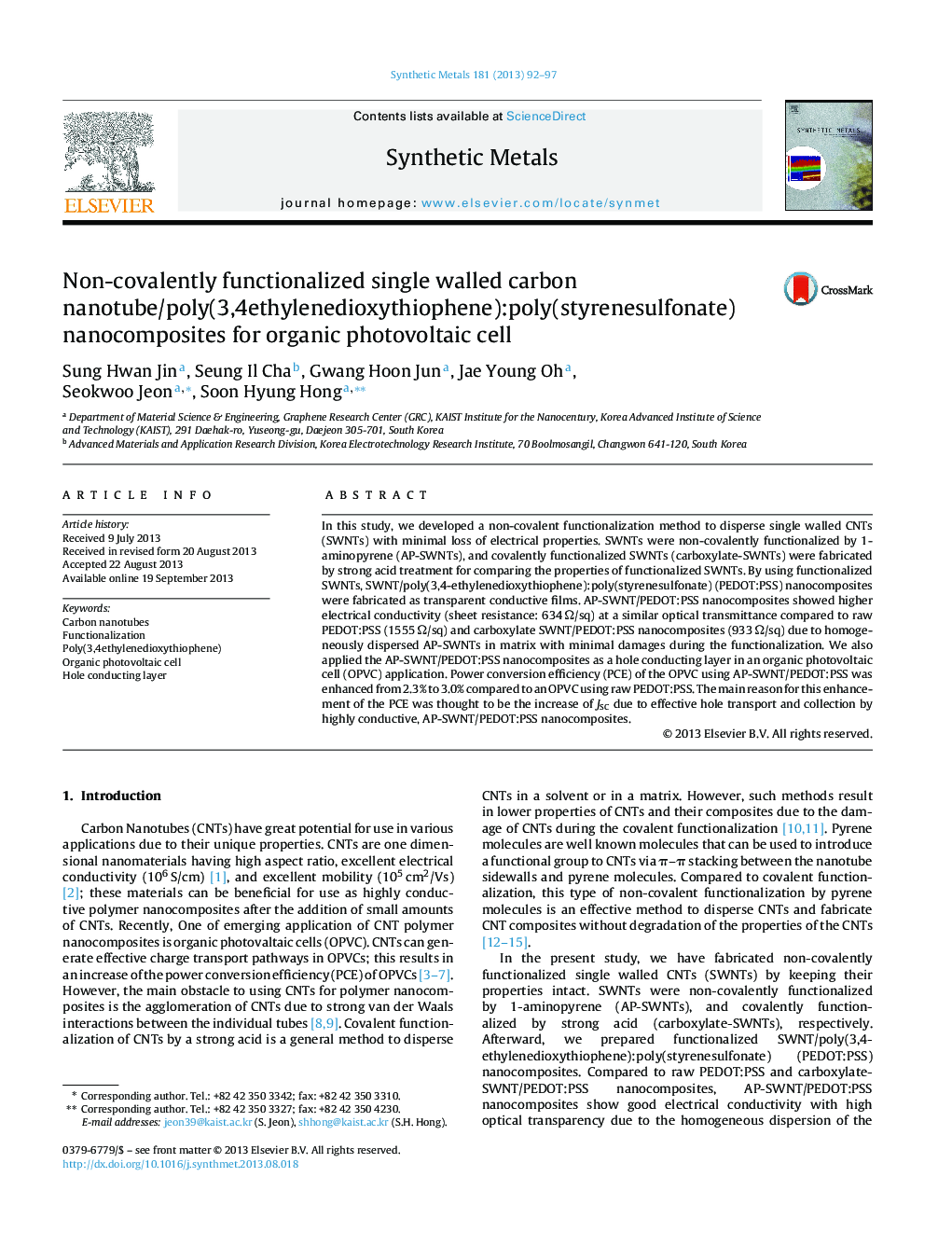| Article ID | Journal | Published Year | Pages | File Type |
|---|---|---|---|---|
| 1441212 | Synthetic Metals | 2013 | 6 Pages |
•We fabricated SWNT/PEDOT:PSS nanocomposites by using non-covalently functionalized SWNTs.•Non-covalently functionalized SWNT/PEDOT:PSS showed higher electrical conductivity.•Non-covalently functionalized SWNT/PEDOT:PSS was applied in OPVC as hole transport layer.•OPVC with non-covalently functionalized SWNT/PEDOT:PSS resulted in an increase of PCE.
In this study, we developed a non-covalent functionalization method to disperse single walled CNTs (SWNTs) with minimal loss of electrical properties. SWNTs were non-covalently functionalized by 1-aminopyrene (AP-SWNTs), and covalently functionalized SWNTs (carboxylate-SWNTs) were fabricated by strong acid treatment for comparing the properties of functionalized SWNTs. By using functionalized SWNTs, SWNT/poly(3,4-ethylenedioxythiophene):poly(styrenesulfonate) (PEDOT:PSS) nanocomposites were fabricated as transparent conductive films. AP-SWNT/PEDOT:PSS nanocomposites showed higher electrical conductivity (sheet resistance: 634 Ω/sq) at a similar optical transmittance compared to raw PEDOT:PSS (1555 Ω/sq) and carboxylate SWNT/PEDOT:PSS nanocomposites (933 Ω/sq) due to homogeneously dispersed AP-SWNTs in matrix with minimal damages during the functionalization. We also applied the AP-SWNT/PEDOT:PSS nanocomposites as a hole conducting layer in an organic photovoltaic cell (OPVC) application. Power conversion efficiency (PCE) of the OPVC using AP-SWNT/PEDOT:PSS was enhanced from 2.3% to 3.0% compared to an OPVC using raw PEDOT:PSS. The main reason for this enhancement of the PCE was thought to be the increase of JSC due to effective hole transport and collection by highly conductive, AP-SWNT/PEDOT:PSS nanocomposites.
